European studies carried out years ago showed that a large part of energy resources is consumed for heating and cooling homes. Lack of thermal insulation, poorly chosen building solutions and inefficient windows cause a large and continuous heat flow between inside and outside, increasing energy consumption. As a result, regulations have emerged to make buildings more energy efficient, and insulating old houses has been one of the measures proposed. Different types of thermal insulation materials have appeared on the market, and of course comparative discussions on the advantages and disadvantages. Apart from insulating capacity and price, the property that still arouses the most interest is fire resistance. Participation in Naturalpaint event on Gutex insulation materials, gave us the opportunity to see "live" a comparative fire resistance test of three insulation materials: polystyrene, basalt wool and Gutex wood fibre board.

Fire resistance of insulation can save lives
How the external insulation of the building is done is essential, not only for thermal and acoustic comfort, but also for fire safety. If the facade is insulated with a combustible material, it will start to burn if a fire breaks out, becoming a source of fire and toxic smoke. As the fire spreads, it will become a major hazard to the residents of the building.
By insulating with a non-combustible material, even if the flames spread and reach, for example, the upper floors, the facade will not contribute to the spread of the fire or release toxic smoke. Non-combustible (not burning) insulation can slow the spread of the fire, which would give more time for residents to leave the building and for firefighters to act. In situations like this, every second counts so that people can save themselves and the fire can be extinguished.
In terms of fire behaviour, there is a big difference between the materials used for building insulation.
Expanded polystyrene, for example, reacts almost immediately to fire, releasing dense toxic smoke. It is made from styrene monomer, a hydrocarbon derived from petroleum, and is a cheap and affordable alternative. At the other end of the spectrum is basaltic mineral woolwhich is incombustible, withstanding very high temperatures before melting. It is made from basalt rock, which is processed thermally and mechanically into insulating panels or blankets. Fibre insulation is made of wood, a material known to be combustible. It seems hard to believe, but the way it is made makes it very fire resistant, comparable to basalt glass.
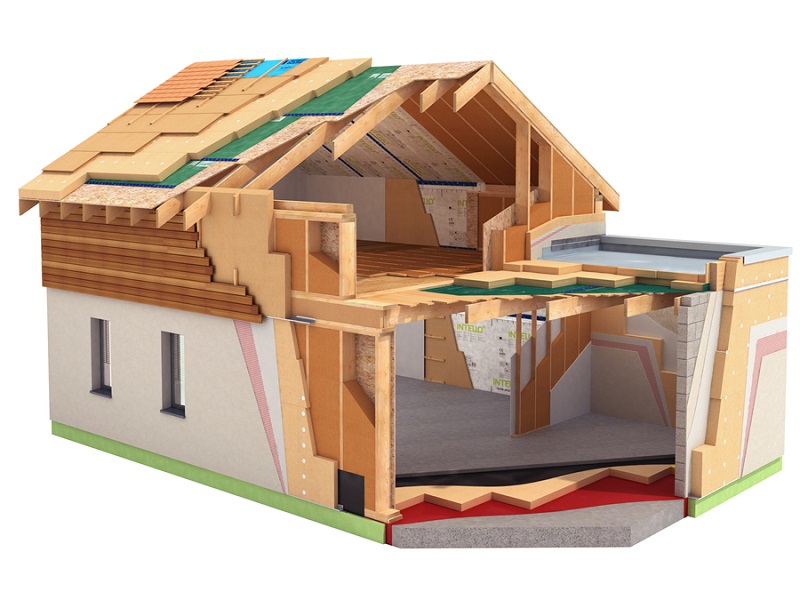
Insulation comparison test: expanded polystyrene, basalt and wood fibre boards
During the workshop organised by Naturalpaint, a comparative fire resistance test was made of the three thermal insulations mentioned above. Three panels of identical dimensions were used: one made of expanded polystyrene, the most widely used insulation material for facades in Romania, a second made of basaltic mineral wool, a non-combustible material, and a third made of wood fibre. The video of the test can be watched below, at the end of the article. For other news subscribe to our YouTube channel.
The panels were framed in a wooden frame, with the insulation separated from each other. Gypsum board was applied to one side of each type of insulation, thus reproducing the real conditions (the insulation is not left "exposed"). The fire source was provided by 3 identical burners with their own tap, one for each panel, attached to a gas cylinder. The flame was applied at the same time for all 3 types of insulation, from the drywall side, in the centre of the panel.
The first to fail was the expanded polystyrene panel. Within a minute of the flame igniting, without the fire breaking through the plasterboard, the temperature of the polystyrene quickly reached 300°C, began to melt, emitting odour and toxic smoke, and the board punctured right next to the flame. After stopping the burner the smoke continued to come out for another 1-2 minutes, the hole in the centre of the board widening.
For the other types of insulation the experiment continued for more than 20 minutes. After 5 minutes, despite the fact that the fire was burning on the drywall side, on the other side the temperature of the panels was as at the beginning. It was possible to hold hands on the panels and no smell or smoke was emitted. After 13 minutes, the temperature in the basaltic wool panel rose quite quickly to 170°C, the temperature in the Gutex panel only rose to 60°C without being pierced by the flame. After 17 minutes the wood fibre panel could still be touched by hand. The temperature in the basalt wool insulation reached 340°C and the panel darkened on the side opposite the flame, but was not pierced. The burner was switched off so that the Gutex panel test could continue without the risk of running out of gas. The fire resistance of basalt glass is recognised, it does not burn but melts at temperatures above 1000°C.
The remaining wood fibre panel changed colour 21 minutes into the test. Smoke and the smell of burning wood were eliminated. Continuing the burn, the fire appeared to the right of the flame, but did not extend to the whole panel. The test was stopped after 25 minutes without the wood fibre panel burning with flame. The smoke released was more from the wooden frame where the flame sometimes reached due to the wind.
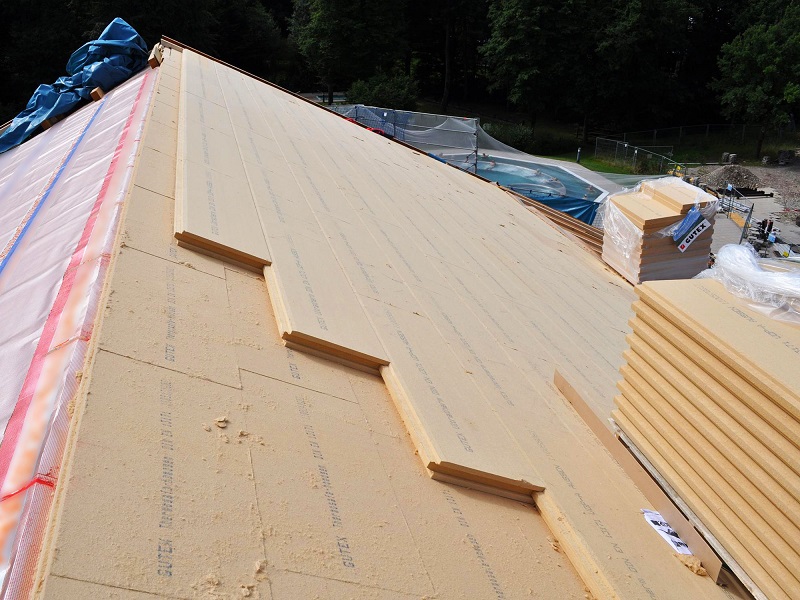
Gutex wood fibre insulation
Gutex Holzfaserplattenwerk has been manufacturing fibreboard since 1932, using pine and spruce wood waste from wood processing plants. The panels are environmentally friendly because only untreated wood is used and the manufacturing processes are very 'clean', with little additives added. The insulation contains only 3-4% polyurethane adhesive, which is needed to form the board, 2% paraffin for water resistance and less than 1% natural salts for rodent and fire resistance.
Gutex wood fibre insulation is available both as boards and as individual fibres. Fibreboard are of different thicknesses, sizes and flexibilities and can be used to insulate ventilated facades and exterior walls, interior walls, in the construction of prefabricated walls of timber-framed houses, for roof insulation, between rafters, between floors or under floors. In order to be as easy as possible to install and to eliminate thermal bridges, the boards are equipped with a nut and bolt fixing system. Individual fibres are used for insulation of difficult and narrow spaces in attics and lofts or any other hard-to-reach place that requires isolation.
Gutex products for thermal and sound insulation of buildings are distributed in Romania by Naturalpaint.

















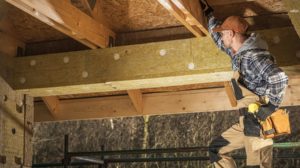
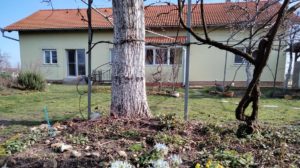
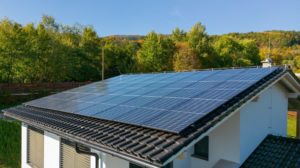
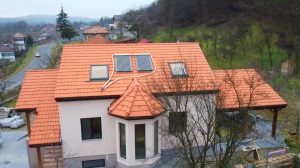
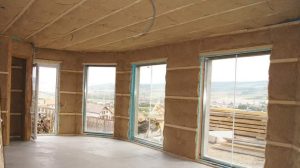
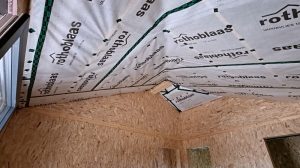
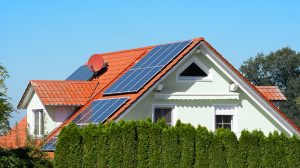
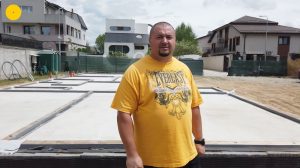
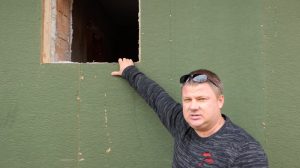
Add comment